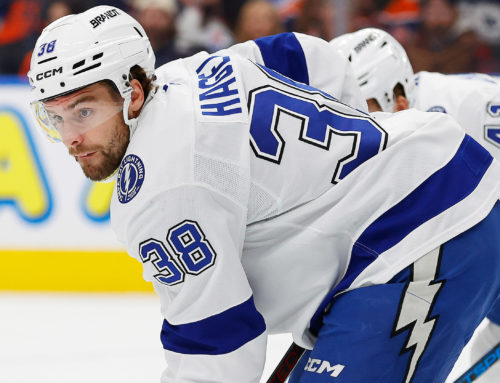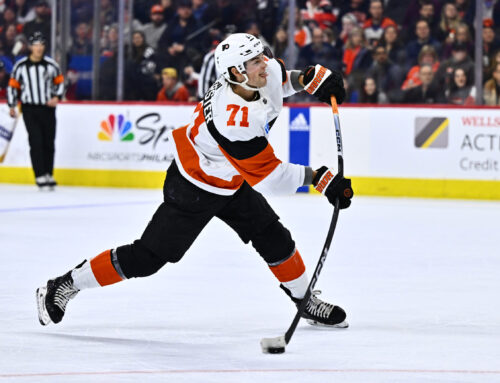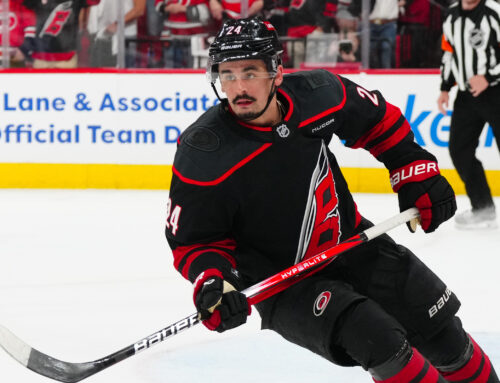In this week's Eastern Edge, we'll take a look at how changes in deployment affected the production of a few players. This will be the first of two parts as we'll continue the discussion with a few more players next week.
Over his final two seasons with Chicago, DeBrincat scored at a point-per-game pace and averaged nearly 21 minutes of action a night. This year, his first in Ottawa, DeBrincat experienced a drop in both deployment and production, skating 19 minutes a night and posting 0.80 points per game.
Since DeBrincat is now a restricted free agent, the Sens can hold onto him for at least one more season if they want to. However, recent reports indicate that Ottawa may trade DeBrincat at the upcoming draft if he doesn't want to sign with the team long term. Regardless of where he plays next season, I'm hopeful he can bounce back and produce around a point-per-game pace again. I don't think it's fair to say that this season's drop in production was solely due to a drop in ice-time. 19 minutes a night is plenty, and we've seen elite production from players given similar deployment. There were likely some other factors at play. For example, the Senators scored on 6.7% of their shots at 5on5 while DeBrincat was on the ice this season. That represents a sizeable drop from his 5on5 shooting percentages during those final years in Chicago (9.1% and 11.7%). This drop may be explained by a downgrade in linemates, as DeBrincat went from playing with Patrick Kane in Chicago, to Drake Batherson and Shane Pinto in Ottawa. While Batherson and Pinto are good players in their own right, DeBrincat's goal-scoring prowess is more likely to flourish alongside an elite playmaker. If not Patrick Kane, maybe Claude Giroux?
When players see more ice time, we tend to expect more production from them – since theoretically, they have more opportunities to put up points. However, not all ice time is equal. Although Reinhart saw his average ice time jump from 17:46 to 19:47 between this season and the last, his production dropped from 1.05 points per game to 0.82 points per game. The volume of Reinhart's deployment increased, but a potential reason his point total fell is because the nature of his deployment changed. Last year, Reinhart enjoyed a more sheltered role on Florida's third line. He started most of his shifts in the offensive zone and benefitted from facing weaker opponents. This past season, he skated alongside Aleksander Barkov on Florida's top line. Not only did this mean facing tougher matchups, but given Barkov's elite two-way ability, this line was often tasked with shutting down the opposition's offense. As a result, Reinhart ended up starting more shifts in the defensive than the offensive zone this year.
With all that being said, I think Reinhart also suffered from a bit of bad luck this year as Florida scored on just 6.5% of their shots at 5on5 with him on the ice. That number was 10.3% last year and closer to 8% in previous years when he was with the Sabres. A bounce back to familiar 5on5 shooting percentages next year should help Reinhart flirt with the point-per-game again. The fact that he's now playing a more defensive role isn't the end of the world. He plays beside elite talent, sees a high-volume of ice time, and gets plenty of offensive deployment thanks to a prominent power-play role. I'd sooner attribute this year's decline in production to bad luck than I would to the new nature of his deployment. That's good news for his fantasy value next season because bad luck usually doesn't last forever, but this new role just might.
In the three years prior to this season, Rust skated 19 and a half minutes a night, enjoyed a 63% share of Pittsburgh's power-play time, and posted 0.91 points per game. His role with the team decreased this year, as did his production. To be more specific, Rust's average ice time dropped to 18 minutes, his share of PP time fell to 38%, and he posted just 0.57 points per game.
Although this past season was a disappointing one, I think there are reasons to be optimistic about his fantasy value next year. For starters, his shooting percentage suggests he fell victim to bad luck during the 2022-2023 campaign. After converting on 15% of his shots over the past three seasons, Rust finished with a 9.5% success rate this year. In recent years, Rust spent most of his time beside Sidney Crosby and Jake Guentzel on the top line. Although he still saw significant minutes beside those two again this year, Rickard Rakell took his spot for significant stretches, which left Rust on the second line with Evgeni Malkin and Jason Zucker. You'd prefer him to play beside Crosby and Guentzel, but I think even Malkin and Zucker have enough offensive talent for Rust to produce at a higher level than he did this year. The volume of his ice time shouldn't be a cause for concern either as 18 minutes a night is more than enough to support a 60-point pace. Now, whether he has the potential for 65+ points will depend on if he can reclaim his role on Pittsburgh's top power-play – a role which was recently stolen by Rickard Rakell. I don't think Rakell did enough to solidify that role long term, so both players could see time on the top unit next season until one sets himself apart from the other.
As a result of an underwhelming showing this past season, Rust's fantasy value is currently the lowest it's been in recent years. I think we may have reached a point where his perceived value has fallen below his actual value, which gives you an opportunity to acquire him at a discounted rate in upcoming fantasy drafts.





 FLA
FLA CHI
CHI NYR
NYR PIT
PIT L.A
L.A COL
COL UTA
UTA BOS
BOS BUF
BUF SEA
SEA NYI
NYI VAN
VAN MIN
MIN TOR
TOR CBJ
CBJ CAR
CAR
